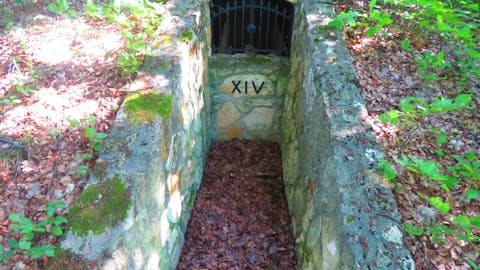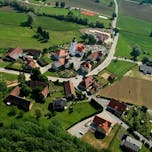
Sveti Jurij v Slovenskih goricah Municipality
Ancient Burial Mounds
The burial mounds bear witness to the settlement of this area during antiquity. The original forests covering the valleys and ridges were already being cleared by settlers in the pre-Roman period. Evidence of this early habitation can be found in the burial mounds, which are densely scattered along gentle ridges, usually on shaded slopes. Such mounds can also be found in Jurovski Dol, where there are five relatively large ones—the largest measures 15 meters in diameter and 1.7 meters in height. Since writing was not yet known at that time, and only few material remains of their dwellings have survived (which are not yet fully researched), we can only infer their way of life and material culture from the artifacts discovered in the mounds. These finds reveal that they were familiar with copper, bronze, and iron. Bronze was used for weapons—such as swords, spearheads, and arrowheads—as well as for knives and often for clothing clasps. Copper was mainly used for women’s jewelry and vessels. As the potter’s wheel was not yet known, pottery was made by hand using coiled strips of clay, then smoothed and coated with mixtures that became waterproof after firing. The color of the urns is usually black, more rarely natural. The added food vessels indicate that bowls were already decorated with simple patterns. The custom of burying the deceased in mounds persisted well into the Roman period, while only the spread of Christianity to these regions, particularly in the 4th century, brought the adoption of skeletal burials.
